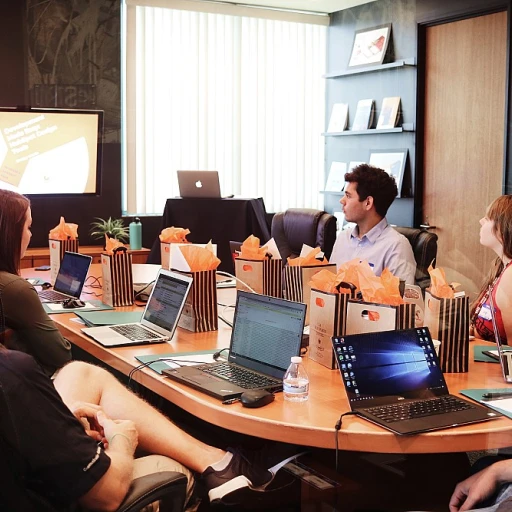
Understanding Mastery Training
Exploring Mastery Training: A Path to Transformational Development
Mastery training is more than just a buzzword in the realm of workforce development; it is a pivotal approach that enhances both professional and personal life through its transformational training methodologies. Rooted in the concept of becoming proficient or expert in particular skills, mastery training focuses on cultivating a deep understanding of essential competencies. Whether it takes place through a traditional course or an online program designed for skill enhancement, the main content of mastery training centers around equipping participants with the knowledge required for long-term success. In the fast-paced world of technological advancements and shifting job landscapes, the necessity for workers to constantly evolve their skill sets is paramount. Mastery training plays a key role in bridging the gap between existing competencies and emerging industry standards. With tailored courses designed to address both basic and advanced skills, this form of training ensures that participants remain at the top of their field. Organizations that prioritize mastery training are often seen dedicating a portion of their resources to provide room for impactful learning experiences. This investment in training time is crucial, as it allows for an atmosphere where safe experimentation and skill application can thrive. In addition to traditional settings, online training platforms have also gained popularity for offering flexibility and access to diverse content. This diversity is instrumental in ensuring that a broad range of learning styles and preferences are catered to. Though training formats may vary, the core goal remains consistent: to transform participants' abilities into top-tier skills through immersive courses that combine theoretical knowledge with practical application. For those balancing a full-time job and seeking skill enhancement, incorporating mastery training into their schedule can present a challenge, but it ultimately provides a substantial payoff in terms of professional growth. To understand how to manage both work and knowledge acquisition effectively, consider this guide to reskilling as a valuable resource.The Importance of Mastery in Reskilling
The Crucial Role of Mastery in Skill Revamp
In the fast-paced world of today, mastery stands as a cornerstone in the practice of reskilling. Its significance cannot be overstated, as achieving mastery in a particular skill directly influences the long-term effectiveness and impact of the learning process. Mastery training is more than just acquiring basic knowledge; it involves an in-depth understanding and ability to apply skills proficiently. Participants in these courses not only gain a deeper comprehension of the subject matter but also develop the capability to solve complex problems efficiently and effectively. This advanced level of learning acts as a transformational training milestone for professionals seeking growth and development in their careers. Furthermore, mastery helps to build confidence and ensure safety, as participants gain a stronghold over the intricacies involved in their skills. The program is designed to incorporate various training modalities, which are instrumental in reinforcing learning through multiple approaches, such as online training, interactive videos, and room-based workshops. These diverse content formats cater to different learning styles, ensuring the effective grasp of white advanced skills. The time participants invest in training is crucial. Training time must be carefully planned to work around other commitments without overwhelming learners. For those seeking flexibility, online platforms offer a viable solution. Training courses don’t have to be rigid; they can be adjusted to fit the participants’ schedules, making use of online resources to maintain the flow of learning. Exploring effective training modalities for reskilling helps in understanding how these various formats can be incorporated into a mastery-focused training program, making it a transformational journey worth embarking upon. Ultimately, mastery facilitates a continuous loop of professional development, allowing individuals to remain competitive and relevant in their respective fields.Identifying Skills for Mastery
Pinpointing the Skills Needed for Mastery
When embarking on the journey of reskilling, especially through mastery training, one crucial step is to clearly identify the skills in need of development. This stage sets a solid foundation for any program designed to achieve sustainable, long-term transformation. It's important not to skip main aspects that determine the success of the entire course. Key factors to consider involve analyzing the current market trends and the white spaces—areas with room for growth. Look at the gaps within the professional sphere that can be filled through advanced skills. Utilizing resources like industry reports can aid in spotlighting the top skills commanding today's competitive environments.- Assessment of Existing Skills: Before embarking on transformational training, a baseline assessment of current capabilities is necessary. This evaluation can showcase which strengths can be utilized and which areas require attention for transformational development.
- Align with Career Objectives: Participants should align their skill development with their career goals. Prioritize skills that play a pivotal role in the professional field, ensuring that the training time is focused and efficient.
- Embrace Versatile Learning Modes: Whether opting for an online training course or a mitt hands-on experience, ensure the choice fits the identified learning needs. Courses designed to offer both video content and interactive sessions can enrich the learning experience.
Strategies for Effective Mastery Training
Crafting a Path to Mastery
Embarking on a journey of mastery training requires a strategic approach. To ensure participants gain the most from their learning experience, it is essential to develop a well-structured plan that aligns with their professional goals and life aspirations. Here are some strategies to consider:
- Customized Learning Paths: Tailor courses designed to meet the specific needs of participants. This involves identifying the skills that require development and creating a program designed to address these areas effectively. By focusing on the main content that matters most, learners can skip main distractions and concentrate on transformational training.
- Blended Learning Approaches: Combine online training with in-person sessions to offer a comprehensive learning experience. Online courses provide flexibility, allowing participants to manage their training time efficiently. Video content can be a powerful tool in this approach, offering visual and auditory learning opportunities.
- Interactive and Engaging Content: Incorporate interactive elements such as quizzes, discussions, and real-life scenarios into the training. This not only makes the learning process more engaging but also helps reinforce the knowledge gained, ensuring long-term retention.
- Regular Feedback and Assessment: Implement regular assessments to track progress and provide feedback. This helps participants understand their strengths and areas for improvement, allowing them to adjust their learning strategies accordingly.
- Supportive Learning Environment: Create a safe space where learners feel comfortable to explore and make mistakes. A supportive environment encourages experimentation and fosters a culture of continuous improvement.
By employing these strategies, mastery training can become a transformational experience that not only enhances professional development but also enriches participants' lives. The time invested in such a program will work towards unlocking their full potential, paving the way for advanced opportunities in their careers.
Overcoming Challenges in Mastery Training
Addressing Obstacles in the Journey of Mastery Training
Mastery training is a transformational path that offers participants significant rewards but also presents distinct challenges. In this section, we will delve into some common hurdles faced during the process of mastery training and propose strategies to navigate them effectively.Balancing Training Time with Everyday Responsibilities
- Time Commitment: Life responsibilities can create constraints for those undergoing mastery training, be it an online or in-person program. Effective time management is crucial, often requiring a reassessment of daily schedules to fit in training commitments, whether they involve video sessions or interacting with course content.
- Establishing Priorities: Participants might benefit from creating a structured timetable that prioritizes mastery training alongside other activities, ensuring safety during learning transitions and allowing room for both personal and professional development.
Maintaining Engagement in Long-Term Training
- Motivation Slumps: It's not uncommon for individuals to experience motivational dips over a prolonged training period. Trainers can counteract this by integrating varied development content and activities that are designed to constantly engage and challenge learners.
- Content Variety and Relevance: Introducing diverse types of content, including interactive elements or video presentations, helps maintain participants' interest, ensuring that courses don’t become monotonous.
Overcoming Knowledge Gaps and Learning Paces
- Tailored Learning Paths: Participants often enter mastery programs with different skills and learning paces. Customizing the learning experience through self-paced online modules or tailored course content can help address these gaps.
- Peer Support and Collaboration: Encouragement to engage with peer groups or study circles can provide a supportive network for exchanging ideas and overcoming individual learning hurdles.
Leveraging Tools and Resources Effectively
- Utilizing Program Features: Mastery training programs designed with adaptable tools and resources enable participants to make the most of their training time by personalizing their learning.
- Ensuring Accessibility: Online training programs must ensure their platforms are user-friendly, allowing all participants, irrespective of their technical skills, to skip main difficulties and efficiently access learning materials.













